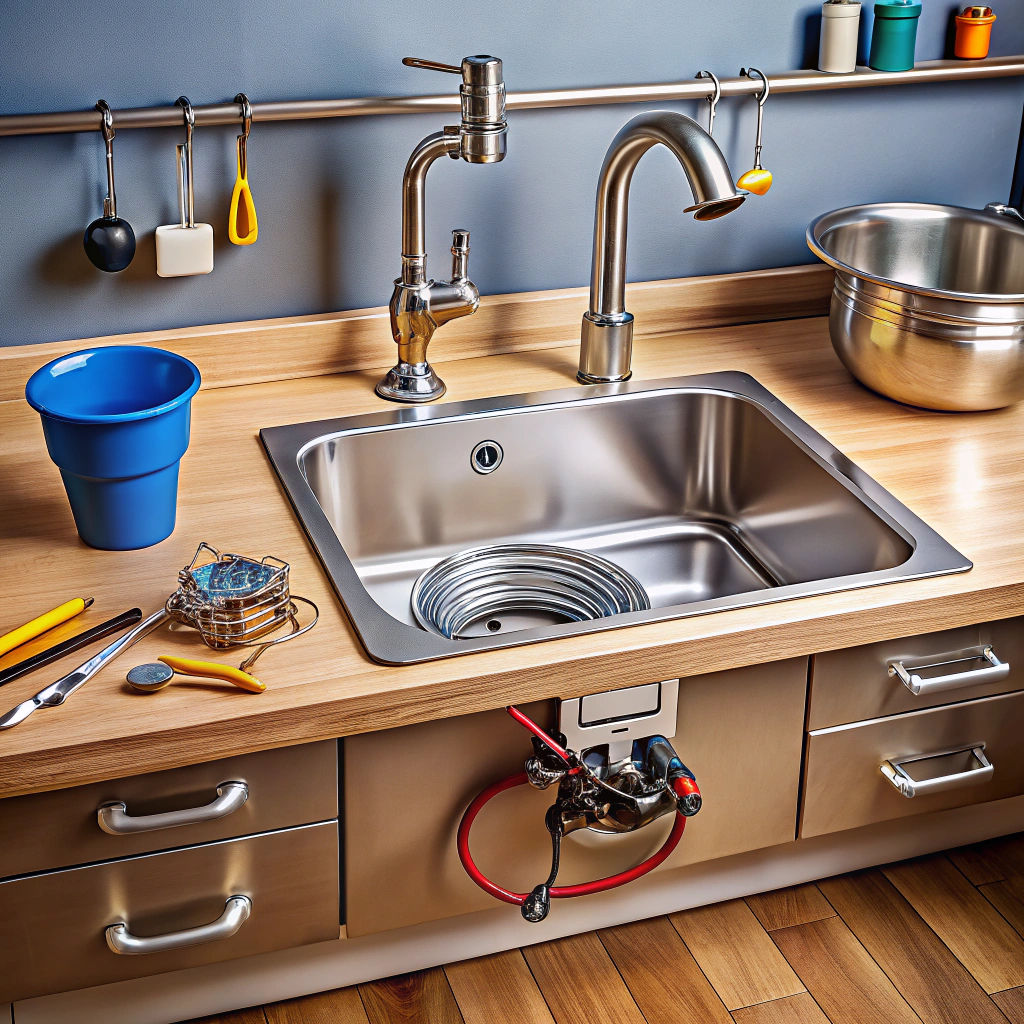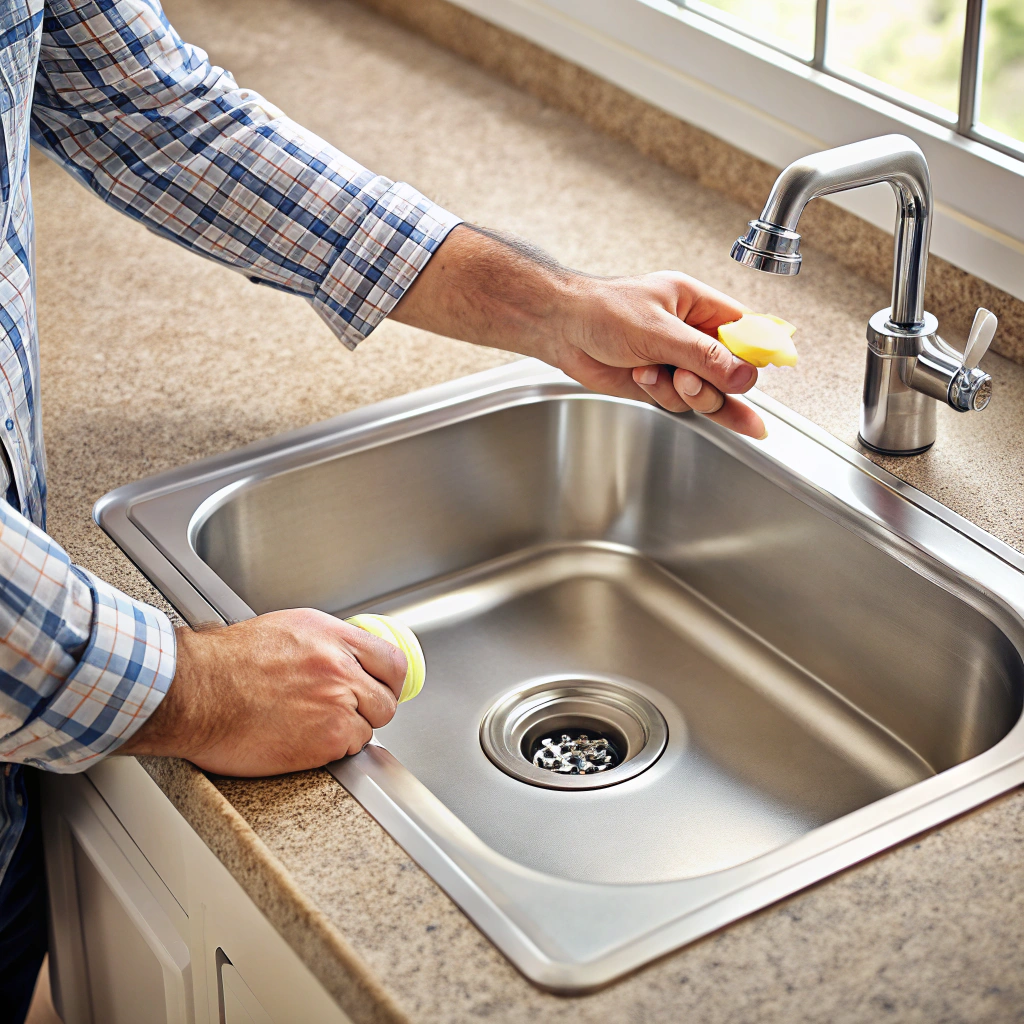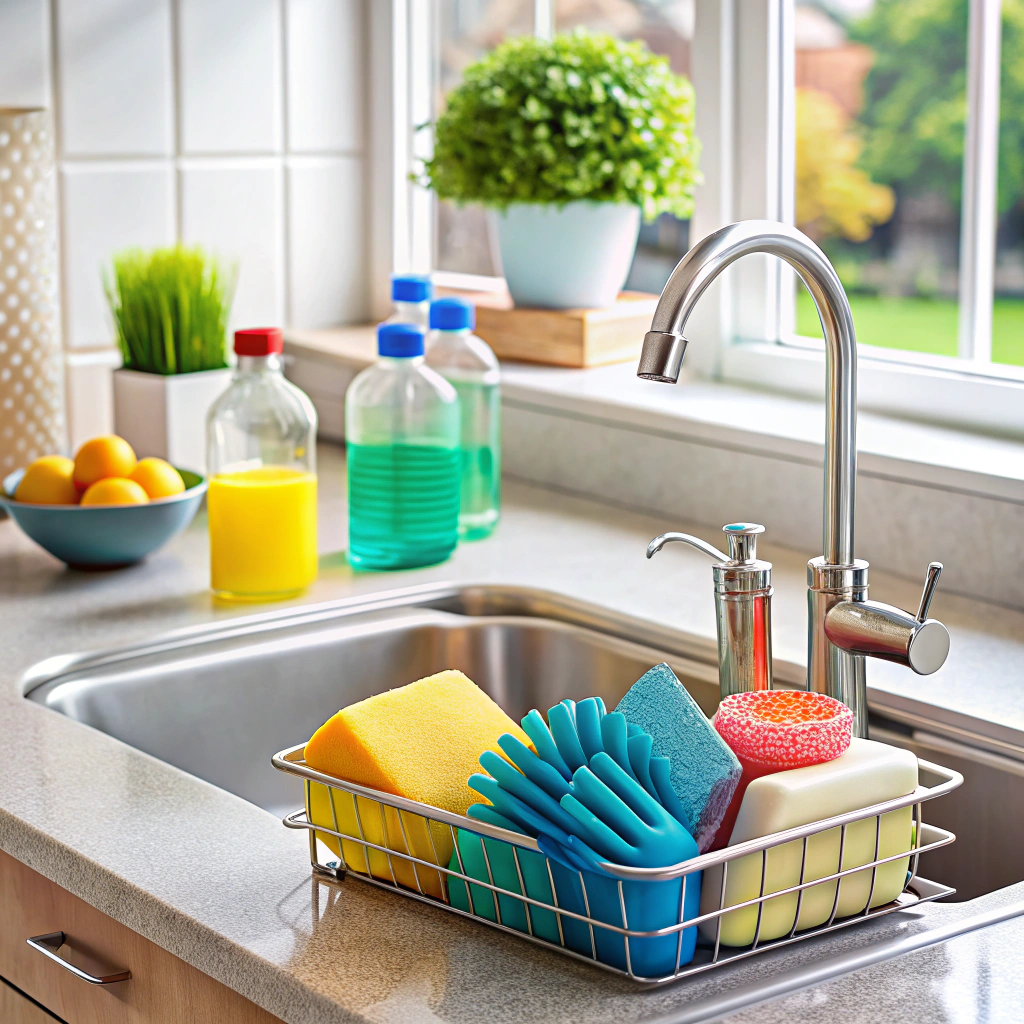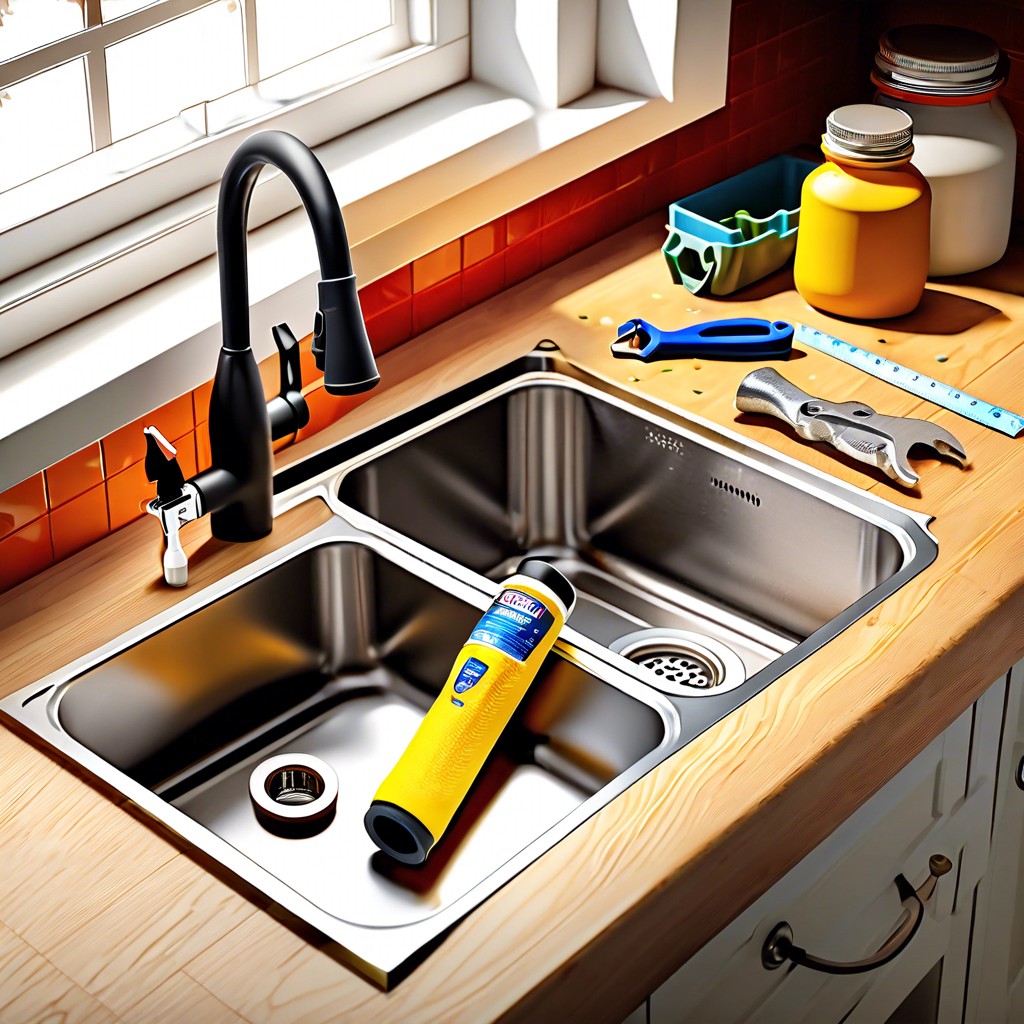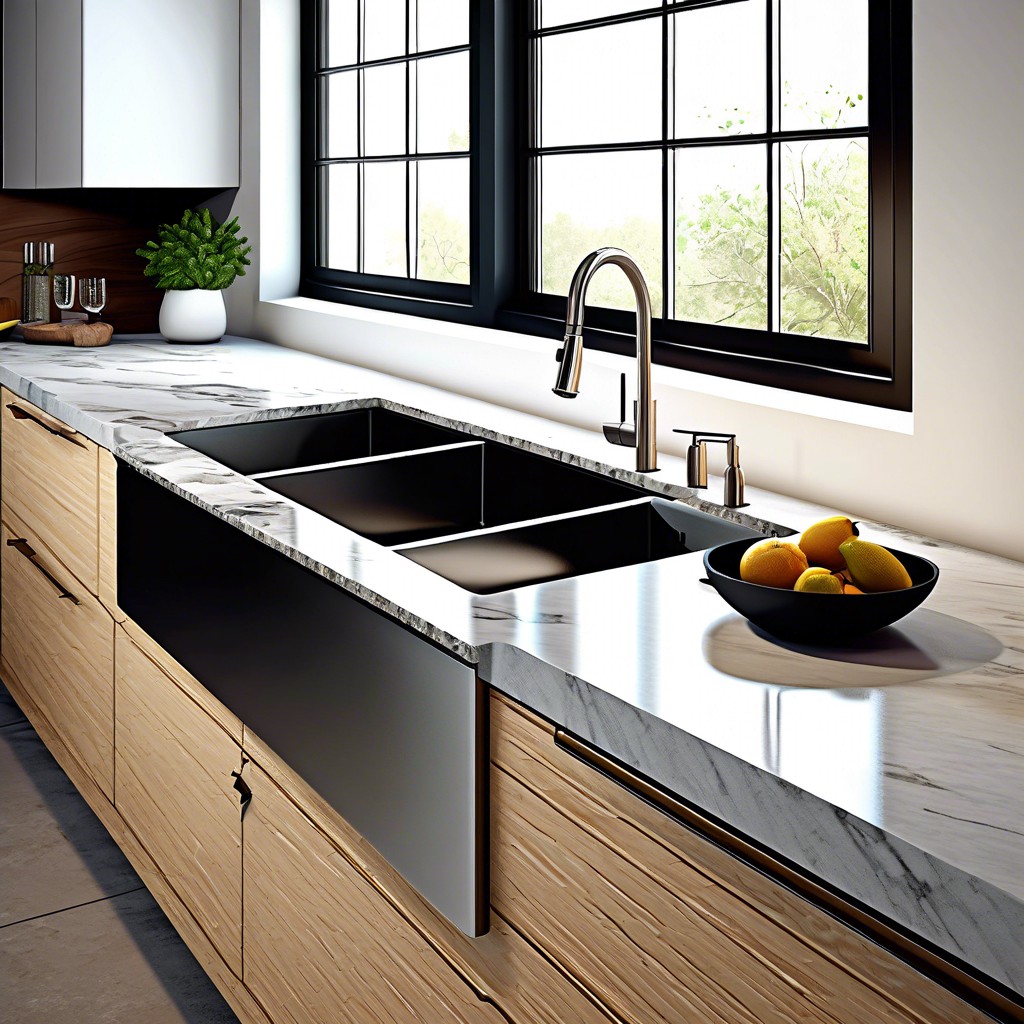Last updated on
Learn about the right kitchen sink drain pipe size to ensure smooth drainage and avoid plumbing headaches.
Got a leaky sink? Or perhaps you’re embarking on a daring DIY kitchen remodel? The unsung hero or sneaky villain often hiding in plain sight is your kitchen sink drain pipe size. Whether you’re matching pipes to your charming farmhouse sink or wrestling with code requirements like a plumber gladiator, this guide is your trusty sidekick. Here you’ll discover which pipe diameter might save your next dinner party, how to dodge those pipe-fitting pitfalls, and which materials won’t require a PhD to pronounce—all while staying compliant and keeping the plumbing drama to a minimum. Dive in for a journey through the underbelly of your kitchen, equipped with all the tips, tricks, and pipe-size secrets you didn’t know you needed.
Key takeaways:
- 1.5-inch is standard for most kitchen sinks.
- Larger sinks may require 2-inch pipes.
- PVC is budget-friendly; copper offers durability.
- Mismatched sizes can lead to leaks and clogs.
- Always check local plumbing codes before installation.
What's Inside
Standard Drain Pipe Diameters
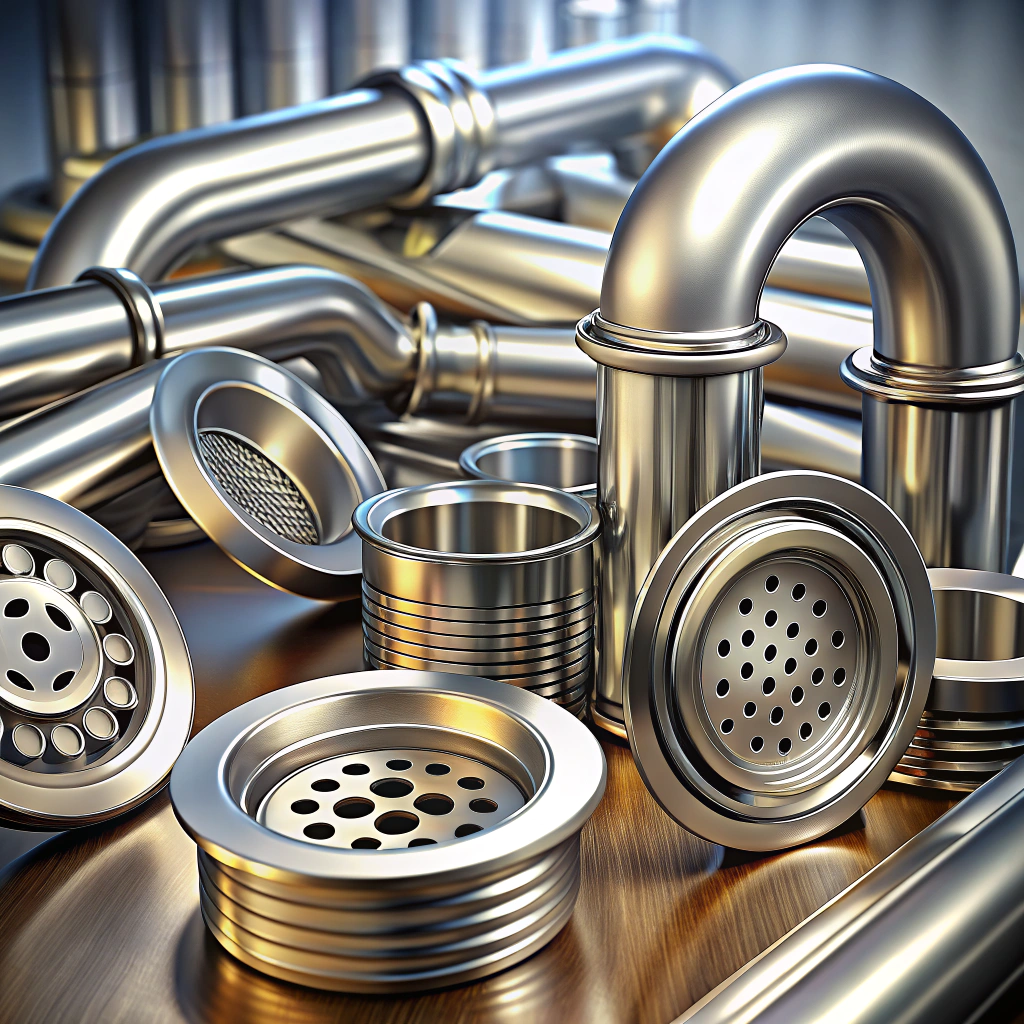
When it comes to sink plumbing, one size does not fit all—quite literally! Most kitchen sinks typically require a 1.5-inch diameter drain pipe. It’s the Goldilocks of plumbing sizes: not too big, not too small, but just right for your standard sink’s water flow.
Some modern kitchen sinks, especially those with garbage disposals or double basins, might need a larger 2-inch pipe. This provides a little extra room for food particles and water to dance their way down the drain without causing a traffic jam.
Bathroom sinks usually use a smaller 1.25-inch pipe. But don’t be tempted to carry this small size over to the kitchen; it’s a recipe for a clogging disaster.
To make things a bit more confusing, some older homes might have different standards due to, well, old-age charm. Forgive them; they just want to keep you on your toes.
In essence, knowing your pipe diameters means the difference between smooth plumbing and spending your Sunday unclogging gunk. Who wouldn’t want a free-flowing sink instead of a water feature in the kitchen?
Common Materials for Drain Pipes
Let’s talk about what your drain pipe might be made of. You’ve got PVC, the champion of budget-friendly options. It’s lightweight, easy to install, and cost-effective, making it a popular choice for many home DIY enthusiasts.
Then, there’s ABS, which sounds like a workout but is actually a rugged contender. It’s durable, resilient to cold, and won’t shatter. ABS is black, which might not match your color-coordinated dreams, but it’s a powerhouse beneath the surface.
Copper pipes are the old-school jazz musicians of the plumbing world. They’ve been around forever and boast natural antimicrobial properties. If you’re feeling fancy and environmentally conscious, copper might be your jam.
Last on the lineup, stainless steel struts onto the stage. It’s all about durability and aesthetics. While it can be more expensive, it’s corrosion-resistant and gives off that swanky kitchen vibe.
Wouldn’t it be neat if these pipes doubled as musical instruments? Imagine your sink humming along while you do the dishes. A melodic kitchen!
Matching Pipe Size to Sink Type
Small bathroom sinks usually pair well with 1 1/4-inch pipes. Due to their dainty size, these pipes handle the moderate flow rate without getting overwhelmed, kind of like the perfect pair of skinny jeans.
For kitchen sinks, 1 1/2-inch pipes are often the star. A kitchen sink puts those pipes to work with more food scraps and soap suds doing a river dance in the drain. Larger, double-bowl sinks might even need 2-inch pipes. They’re like the yoga pants of pipe sizes – a little extra stretch when you need it.
An oversized farmhouse sink, on the other hand, might surprise you. When cooking like it’s the Food Network, that beautiful beast could demand larger drainage power. Trust it; a clogged pipe is the ultimate party crasher.
Garbage disposals crave a snug fit with a 1 1/2-inch pipe, but don’t be shocked when they want to expand to 2 inches. They’ve got a colossal appetite for all those scraps you feed them! Think of it as the buffet line for drain pipes. Hungry yet?
Implications of Incorrect Pipe Sizing
Oh, the adventures of mismatched pipe sizes! Picture this: a soggy kitchen floor, as water cascades like a scene from a low-budget disaster movie. Using the wrong pipe size can lead to:
Water backups: Narrow pipes struggle to keep up with the flow from your busy kitchen activities, causing sluggish drainage and surprise puddles.
Pipe stress: Overworked, underpowered pipes are more prone to leaks and bursts. Picture them sweating beads of water in exasperation.
Waste of resources: Larger pipes in a small setup? It’s like wearing clown shoes to a running race—excessive and unnecessary.
Noise pollution: Wrong sizes can lead to gurgling sounds that might make you think your drain is singing a mournful ballad.
Unwanted odors: Reduced flow leads to food residue buildup, inviting those mystery aromas only slightly less pleasant than wet socks.
Understanding the basics of pipe sizing is like learning a kitchen dance and can save you from these little dramas.
Installation Tips for Different Pipe Sizes
Biggest tip: Keep those pipes airtight and watertight. Ain’t nobody got time for leaks.
For PVC pipes, remember to use primer and cement. It’s like a peanut butter and jelly combo for securing joints. Just make sure it doesn’t actually taste tempting.
If you’re working with metal pipes, grab two trusty pipe wrenches. It’s like wrangling an alligator—one wrench for each hand. This will help grip and twist without a fuss.
Always measure twice and cut once. Unless you’re cutting with your cat around. Then, maybe measure three times. But srsly, precise cuts are key.
Use Teflon tape on threaded connections. Think of it as their little scarf to keep water from escaping. Wrap it snugly, go easy.
Pay attention to slope. Remember, water loves to flow downhill, not flat or uphill. A quarter-inch per foot downwards makes gravity your best buddy.
Have extra washers and seals on hand. They disappear like socks in the dryer, and you’ll want them when installing new connections to ensure everything stays tight.
And if things get too puzzling, don’t be a hero—calling in backup from a pro ensures nothing spirals out of control. Plus, watching them work could be free entertainment!
Adapting Pipe Sizes for Existing Plumbing
Got a vintage kitchen with ancient plumbing that looks like it belongs in a museum? Fear not. Mixing and matching pipe sizes for modern upgrades is easier than you’d think.
- First, get the right connectors or adapters before you start tinkering. Think of them as the kitchen sink’s version of relationship counselors. They bridge the gap between different pipe sizes, creating harmony where there once was chaos.
- Flexibility isn’t just for yogis. Use flexible couplings to join pipes of varying sizes with ease. They’re the duct tape of plumbing but without the judgmental glances from your neighbor, Bob.
- Consider the S-trap and P-trap dance. They’re like the tango dancers of plumbing. These curved pipes connect to the rest of the plumbing system and might need adjusting or replacing with the right adapter size to dance to the tune of your existing setup.
- Always channel your inner detective. Measure twice, cut once. Can’t hurt to shave a few millimeters off those intense DIY nightmares, eh?
- Whatever you do, keep that plumber’s tape handy. You’ll find it’s the seasoning to every pipe connection, sealing threads like a pro.
With a few trusty tools and a bit of know-how, you’ll be ready to tackle those pipe size quandaries without losing your marbles. Or your sockets.
Maintenance Considerations for Different Sizes
Larger drain pipes might seem like low-maintenance heroes due to their capacity, but they can channel trouble if ignored. Sludge and debris may settle at the bottom over time, turning them into the subway of clogs. Fear not, though! Regular cleaning and using an enzyme-based drain cleaner can work magic.
Smaller pipes, on the other hand, demand vigilant attention. They throw a tantrum more quickly if packed with food waste, hair, or your kid’s missing LEGO piece. Running hot water regularly helps keep things flowing.
Ah, let’s not forget the material: PVC pipes are generally easy to clean and resistant to deposits, while metal pipes might need a bit more elbow grease—or vinegar—to keep the rust at bay. Keeping these practices in check will make drainage less of a guessing game and more of a smooth performance.
For all the cleanliness wizards out there, investing in a plumber’s snake isn’t a bad idea. It’s like a magic wand for freeing up a jam. Remember, happy drains make a happy kitchen!
Accessibility of Different Pipe Sizes At Hardware Stores
Shopping for drain pipes is like choosing a movie snack: options galore, but not everything is the right fit for you. Most hardware stores stock a range of pipe sizes, with 1.5-inch and 2-inch diameters being the stars of the show. These are your blockbuster hits because they suit most kitchen sinks.
However, specialty sizes might feel like an indie film, playing only at specific times at select locations. Translation: you might not find them everywhere. If your sink prefers something out of the ordinary, calling ahead or checking online inventories can save a trip.
PVC and ABS are commonly found materials, sometimes stacked like popcorn at the concessions stand, so availability usually isn’t a concern. Copper pipes are more like the artisan triple-layered butter cheesecake of the plumbing world—they’re available, but priced as such.
When in doubt, a quick chat with the friendly staff might reveal other stores nearby that have the elusive pipe you’ve been searching for. It’s like getting a movie recommendation: you end up with a hidden gem you didn’t know you needed!
Navigating Code Requirements for Pipe Size
Ah, the world of plumbing codes—a game of numbers and rules that makes tax codes look like bedtime stories. But don’t lose your marbles just yet.
First, codes vary by location. Like those regional accents, one town may require a 1 1/2-inch pipe, while the next insists on a 2-inch diameter.
Safety is a driving force. The right size ensures efficient drainage and prevents those dreaded backups that turn your kitchen into a swamp.
Water flow regulations exist to keep things moving smoothly—even if they wouldn’t pass a highway speed test! It’s all about balance.
Local permits may dictate the size based on fixtures and the number of sinks. So, don’t go rogue and assume bigger is always better without checking.
Consulting a plumber is often a good move. They speak fluent “code” and know the local dialect. No need to wrestle with a giant book of regulations solo.
Staying within code can also impact your insurance. If something goes wrong and you’ve been flirting with non-compliance, coverage could become tricky.
Remember, codes aren’t just red tape—they’re your kitchen’s best friend, keeping things running smoothly and preventing those late-night emergency calls. Pass the wrench, and may plumbing peace prevail in your kitchen!
Upgrading Drain Pipes: Size Considerations
When you’re thinking about upgrading those kitchen sink drain pipes, keep a few things in mind to ensure everything flows smoothly.
First, consider your sink’s style. Those grand double sinks or hefty farmhouse basins might just be demanding a larger drain pipe to avoid the dreaded slow drain blues. So, size up if needed.
Next, always check compatibility with existing plumbing. If your home leans vintage, it might be paired with older, smaller pipes. That’s when you might need adapters or couplings to ensure a perfect fit, like a plumbing matchmaker.
Don’t forget about the local building codes. They have strong opinions on what’s acceptable, and you don’t want to end up on their bad side.
Finally, bigger pipes can handle more flow but might be a tight squeeze in cramped spaces. Always measure twice because real-life Tetris with pipes isn’t as fun as it sounds.
